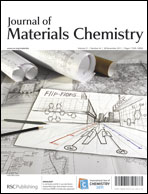Linker-free covalent thermophilic β-glucosidase functionalized polymeric surfaces
Abstract
The surface immobilization of enzymes is important for many biomedical and industrial applications; however, the choice of enzyme and immobilization method for best performance is often difficult. This paper demonstrates that Plasma Immersion Ion Implantation (PIII) provides high enzyme coverage and rapid covalent attachment (within the first minute) of incubation, and shows how this can be used to control the composition of the attached layer from an enzyme mixture. The use of a thermophilic enzyme combined with covalent immobilization viaPIII-treatment significantly improves β-glucosidase activity. β-glucosidase is an important rate-limiting enzyme in the production of cellulosic biofuel and is useful in many other industrial applications. β-glucosidase immobilized on the PIII-treated polystyrene surface demonstrated significant improvements in reaction rate and


 Please wait while we load your content...
Please wait while we load your content...